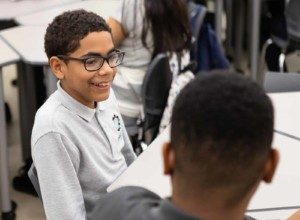Bigger and Better: How Schools Can Increase Admission While Maintaining Quality

“Bigger and Better: How Schools Can Increase Admission While Maintaining Quality” by Courtney Buell first appeared on Edcetera.
Until recently, the formula for collegiate prestige has been to limit admittance and charge high tuition, ensuring a school’s performance by filling its classes with the most gifted and financially secure, and giving faculty the luxury of small classes.
Now, with students questioning the value of higher education while unemployment remains a problem and employers cry for more qualified candidates, some schools have chosen an alternate path to excellence by showing what they can do instead of who they can get. As explored in New America Foundation’s Next Generation University study, a group of schools have begun by eschewing old notions of clout for a new model.
Rather than gain prestige through exclusivity, these schools are demonstrating excellence by admitting larger numbers of a wider range of students, charging less tuition, and proving their excellence through efficiency and increased completion rates. But how can schools let more students in while still maintaining educational quality? Is it possible for students to feel connected, inspired, and accountable for their education – to really excel – in a large school with large classes?
Satellite Campuses
One of the difficulties of accepting more students is finding room for all of them on an already established, possibly crowded campus. Rather than deal with the construction and funding problems associated with expanding a campus in place, many schools have chosen to divide their campuses over various locations.The idea of allowing a school to expand outside its already established borders gives universities the flexibility to snap up property around town as it becomes available and divide the schools up by majors for a more intimate and focused student body.
University of Maryland, for example, has their main campus in College Park while the campus for their public health and law students is a few miles away, in Baltimore. Students at University of Maryland, Baltimore benefit from being part of a field-specialized community while remaining under the umbrella of University of Maryland and all its name implies.
Blended courses
While some students report increased difficulty in learning from online courses, a much smaller number had problems in blended courses. Blended courses are conducted partly in-person and partly online, so students have the structure of an on-campus class and a professor they can meet regularly, while the professor can spend less time on campus with each class, effectively allowing the students to have more flexibility in their schedule while professors can take on more courses.
One school that took part in the Next Generation study was University of Central Florida, and their students, on average, felt that taking a blended course was even better than either on campus or online.
Minding Data With Adaptive Learning and Electronic Advising
We’ve mentioned Arizona State University in a previous article highlighting the adaptive learning software for developmental math from Knewton. Increasing completion at universities means streamlining developmental courses, particularly math, which can hold students back and cause discouragement. Knewton’s adaptive learning software keeps track of a student’s progress so professors can see who is progressing quickly and who needs extra help. The software also places the focus on mastery of concepts rather than grades, so when students prove their understanding they can move on to the next, and when they need more time, they are given it. This way, students who would get bored with the class can finish it quickly, and the students who need more attention will benefit from more teacher attention toward the end of the semester as other students finish.
Advising is another field that benefits from keeping track of student data. Typically when advisors work with students at a large school, they have nothing but a transcript and the student’s word to base their decisions and recommendations on. Communication between professors and advisors on student progress is not always clear or easy, especially at a larger school. To paint a more complete picture of students’ experience, some schools are using electronic advising databases as a tool to keep track of students’ experiences and aptitudes. This data gives advisors the ability to recommend majors and career paths based on solid information and steer struggling students toward courses they will succeed in.
Student Response
We’ve talked a lot about student response in recent months, but the ways it benefits the professors and students is particularly important when working with larger classes. Because it’s impossible for professors of large courses to speak with each student individually in each class session, tools like Learning Catalytics which can gauge student understanding and create groups for meaningful discussion based on their responses, are invaluable.
The old model of university prestige is losing relevance in our changing world. The schools that turn their sights toward efficient and quality education for the everyday student will not only set themselves up for long-term success, but will herald in a new generation of excellence in academia.




0 Comments
Leave a Comment
Your email address will not be published. All fields are required.